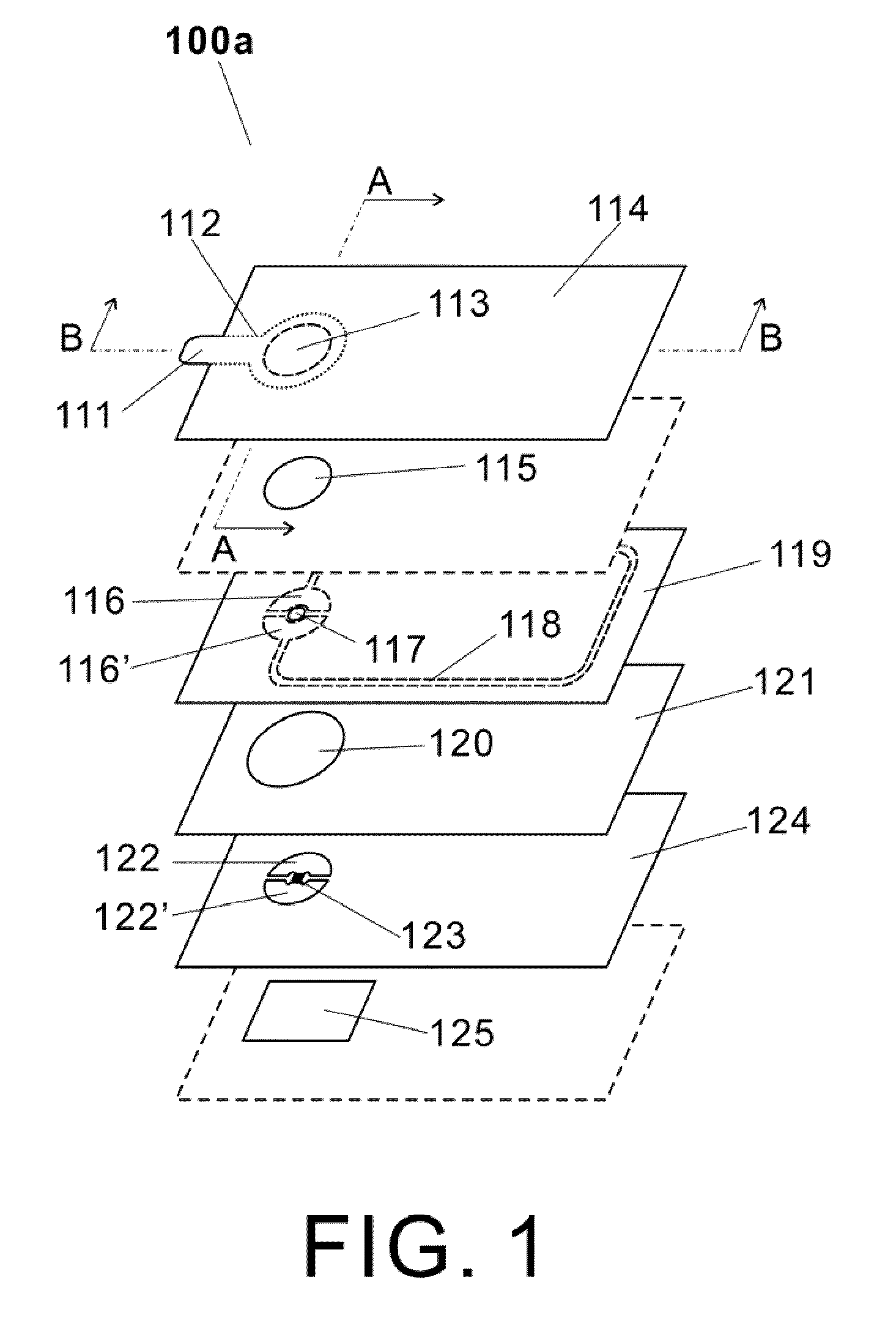Secure electromagnetic data storage element having a plurality of selectively determined switchable security modes
- Summary
- Abstract
- Description
- Claims
- Application Information
AI Technical Summary
Benefits of technology
Problems solved by technology
Method used
Image
Examples
Embodiment Construction
[0070]The apparatus of the present invention are directed to a selectively accessible electromagnetically resonant data storage element (that may be implemented as a resonant tag, card, and / or embedded element integrated into a product), that is selectively responsive to predetermined electromagnetic interrogation thereof, that comprises a novel membrane switch component for enabling a user to selectively enable and / or disable interrogatory access to the resonant component, to protect from unauthorized interrogation thereof (hereinafter “MSRDS element”).
[0071]In summary, the inventive MSRDS element comprises a top circuitry layer, a bottom circuitry layer, which includes a microchip, a plurality of contact pads and an antenna, an insulation spacer layer, a pressure layer retention component, and an optional EM / EMI shielding layer. The membrane switch may be formed through a combination of aligned and configured subcomponents of at least a portion of the element's layers. In one embo...
PUM
 Login to View More
Login to View More Abstract
Description
Claims
Application Information
 Login to View More
Login to View More - R&D
- Intellectual Property
- Life Sciences
- Materials
- Tech Scout
- Unparalleled Data Quality
- Higher Quality Content
- 60% Fewer Hallucinations
Browse by: Latest US Patents, China's latest patents, Technical Efficacy Thesaurus, Application Domain, Technology Topic, Popular Technical Reports.
© 2025 PatSnap. All rights reserved.Legal|Privacy policy|Modern Slavery Act Transparency Statement|Sitemap|About US| Contact US: help@patsnap.com



